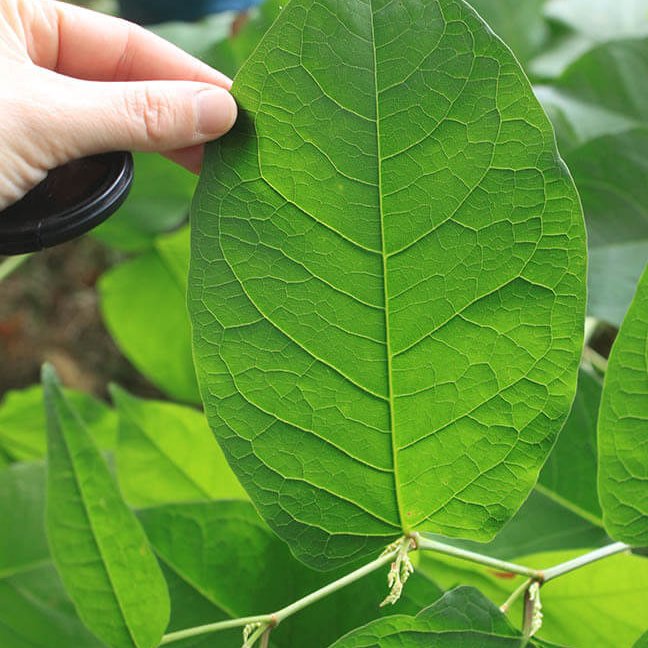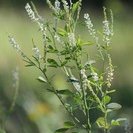The following are high priority species throughout the watershed. Unless otherwise noted, all information was gathered from the Alaska Exotic Plant Information Clearinghouse and the pocket field guide Selected Invasive Plants of Alaska (2004), published by the U.S. Forest Service. Pocket guides are available at the CRWP office.
Report any sightings of these invasive plants in the Copper River watershed using our CRWP Invasive Plant Reporter.
Reed Canarygrass

Reed canarygrass (Phalaris arundinacea) (Invasiveness Rank: 83/100) forms dense, persistent monocultures in wetlands and in disturbed areas. Dense stands can promote silt deposition and constrict waterways, and may even alter soil hydrology.
Identification: Reed canarygrass has hollow stems, 6-8 feet tall, with a bluish-green waxy coating. Leaves clasp stem. Seedheads start compact and then open at maturity. (Photo credit Jamie Nielsen, University of Alaska Fairbanks, Cooperative Extension Service, Bugwood.org)
Treatment: Clip seed heads and dispose of in securely tied garbage bag.
Reed canarygrass herbicide FAQ
Bohemian Knotweed

Bohemian knotweed (Fallopia x bohemica) (Invasiveness Rank: 87/100) is a hybrid between Japanese knotweed and giant knotweed. It spreads mostly by stem and root fragments and forms monocultures and reduces plant diversity by replacing and eliminating native vegetation. It can clog waterways and lowers the quality of habitat for wildlife and fish, reducing food supplies for juvenile salmon in the spring.
Identification: Bohemian knotweed has characteristics of both giant and Japanese knotweed because it is a hybrid of these species. (Middle specimen in image.) It usually grows 6.5-10 feet tall and has a hollow, cane-like stem. Leaves can be either spade or heart-shaped and have short, triangular-shaped hairs on the bottom. Flowers are small, cream to greenish white and grow in plume-like, branched clusters from leaf axils near the end of stems. Fruit is 3-sided, black and shiny.
Orange Hawkweed

Orange hawkweed (Hieracium aurantiacum) (Invasiveness Rank: 79/100)spreads by seed, rhizomes and horizontal runners and establishes dense monocultures, lowering biodiversity and outcompeting native species. Gardeners often introduce it to an area because they are attracted to its colorful flower. Spreads effectively along roads, riparian areas and beaches.
Identification: Colorful orange-red flowers. Leaves clustered in a small basal rosette and are covered with white hairs. Stems have shorter dark colored hairs. (photo credit Michael Shephard, USDA Forest Service, Bugwood.org)
Treatment: Cordovans can help stop the spread of Orange Hawkweed by removing and properly disposing of seed heads in a securely tied garbage bag. Make sure to ONLY remove the seed heads from the top of the plant and not dig up or pull the plant – digging or pulling the plant causes the plant to spread via the rhizomes. Landowners can also use this recommended herbicide spray (Ortho GroundClear Poison Ivy Killer RTU Liquid) sold at ACE Hardware.
White Sweetclover

White sweetclover (Melilotus alba) (Invasiveness Rank: 81/100) forms dense stands, overshadows lower growing plants, and changes soil chemistry to make it inhospitable to native plants. It contains coumarin that is toxic to animals, and has the potential to alter sedimentation rates of river systems due to its ability to colonize on gravel bars, especially in glacial systems.
Identification: Plants can grow to 6 feet tall. They have a sweet scent and many-branched stems. Leaves are toothed, oblong to lance-shaped and have 3 leaflets. Flowers are small and taper to a spike-shaped cluster at the end of branches.
Bird Vetch

Bird vetch (Vicia cracca) (Invasiveness Rank: 73/100) reproduces by seed and vegetatively by underground rhizomes, making it a very aggressive weed. It climbs fencing, trees, bushes and other vegetation, outcompeting its host for sunlight, space and moisture. Spreads along roads, trails and other disturbed areas.
Identification: Multiple, branching vine-like stems that have small tendrils and alternate, compound leaves with 8-10 leaflets. Purple flowers are arranged on a one-sided spike and mature into inch-long, lance-shaped pods that contain seeds.
Narrowleaf Hawksbeard

Narrowleaf hawksbeard (Crepis tectorum) (Invasiveness Rank: 56/100)is often found on disturbed soil, waste places, riverbars or roadsides. Competes with seedlings and forage. Spreads into riparian areas.
Identification: Lance-shaped leaves grow at the base of the plant and have toothed edges. Leaves on the stem clasp the stem. Dandelion-like flowers are smooth and lack hairs.


